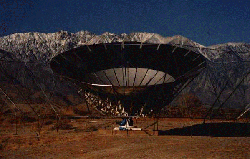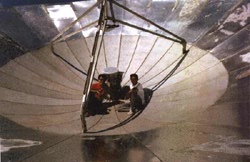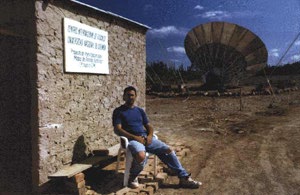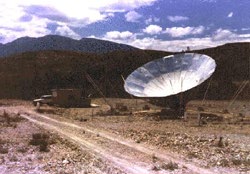The results of the scans and the equipment operating in each location are shown in the following pictures.


Photo
of the GEM dish operating near Bishop, California.
Preliminary 1465 MHz GEM map taken from Bishop.
Though data taking was in progress, the GEM team has made a preliminary map of the Galactic emission at the lowest frequency: 408 MHz. There is an already existing 408 MHz map constructed by Haslam et al. by putting together surveys taken at several radio telescope facilities. These two maps can be compared as a check of the GEM data taking and that is what the preliminary map made was made to do.
Photo
of the preliminary GEM 408 GHz map from Colombia.
Photo
Photo
Photo
Photo
Thyrso Villela, Max Tegmark, & George Smoot
Camilo Tello, Thyrso Villela, & George Smoot
More Photos of the GEM dish operating at the Observatory of the Instituto de Canarias on Teide, Tenerife, the Canary Islands, Spain. These include the background, George and Camilo removing the secondary and installing the 2.3 GHz etc.
Return to the Smoot Group page for a complete description of Dr. Smoot's group's research activities.